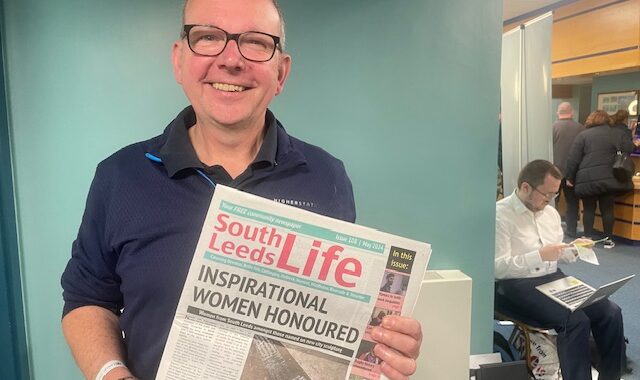Gareth Davies, an investigative journalist who formerly worked at Trinity Mirror-owned Croydon Advertiser recently ignited a debate about the state of local journalism in the UK with a series of tweets about the newspaper over the weekend. His anger was sparked by the inclusion of two separate (and non-local) listicles on consecutive pages of his former paper, but it runs deeper than this, and is linked to trends in the local news industry that go back decades. He also criticised recent changes brought in by Trinity Mirror management, including the suggestion that “reporters now have to get permission to write stories that might get less than 1,000 hits”. In other words, like others in his trade, he is frustrated that his former employers seem to be chasing clicks at the expense of what he sees as quality news in the public interest.
For their part, Trinity Mirror have denied the claims but have also defended their digital strategy – with Digital Publishing Director David Higgerson writing that “the more people who see a story locally, the greater chance we have of convincing local advertisers to jump on board.” Neil Benson, the company’s Regional Editorial Director, was more forthright in his response. Defending Trinity’s digital strategy, he stated:
“Journalists have to think like their audience, cover the questions and concerns they are likely to have and present stories in a way that makes them want to read it. The days when reporters could choose, arrogantly, to write about what interests them, rather than what interests the audience, are over.”
Gareth Davies later wrote more extensively about his view of the current state and future of local news:
“…what is happening at my former paper is indicative of a wider problem undermining local journalism…to such an extent that it is probably beyond saving, at least in its traditional form.”
Davies cites media co-operative The Bristol Cable as a possible “hint” of what can be achieved without corporate ownership. In an excellent article on the local news debate, former local journalist Liz Gerard also pointed to the community news sector as succeeding in some of the areas that Trinity Mirror is alleged to be failing. She wrote:
“There are many reasons why local papers are struggling, but the consolidation of operations that take journalists physically ever further from their readers must be a key factor. And yet the tougher times get, the more they do it. Don’t they look at the rise of the hyper-locals and wonder?”
The idea that community or hyperlocal journalism could fill the vacuum left by a struggling traditional local news industry is not a new one. But is it realistic?
News black holes
Rachel Howells recently wrote for us about her PhD research on ‘news black holes’, which focuses on Port Talbot as its central case study. Like many other UK towns, Port Talbot lost its weekly newspaper, the Port Talbot Guardian, in 2009, and now news and information in the town is provided by the Port Talbot Magnet (a quarterly newspaper and website run by a part-time mix of volunteers and paid freelance journalists) and the South Wales Evening Post, based 20 minutes’ drive away in Swansea, but maintaining a Port Talbot edition with some bespoke local news. In the sample period analysed (1970 – 2015) there was a 90% drop in journalists covering the area, coupled with “process changes” in local newspapers including “reporters…not [being] allowed to leave the office unless by express permission”, and increasing reliance on managed news sources such as press releases from local officials. She found that local news became less independent and less reflective of community life. In conclusion, Rachel called for more support for community or hyperlocal news publishers establishing services in areas left behind by traditional local news.
However, as Port Talbot demonstrates, the services taking the place of local news cannot fully replace previous levels of provision, as they are often run on a part-time or voluntary basis, and have limited audience reach in the areas they serve. Research undertaken into the state of hyperlocal news in the UK in 2014 found a small group of successful local news entrepreneurs who are beginning to grow small businesses or operate non-profit social enterprises. It also found a much larger group of voluntary community journalists, who run services part-time or around day jobs.
The rise of the volunteer hyperlocal news
The hugely important rise of informal DIY hyperlocal news, made possible by the advent of blogs and social media, means many hundreds of people now cover the minutae of local life in a variety of ways at little cost. These volunteers often produce news that plays roles traditionally associated with local journalism. They cover local politics, carry out investigations which hold local elites to account, represent community life (which can help with social cohesion and fostering shared identity); and run, or help publicise, local campaigns to ensure citizens can effect change where they live. But they also offer new benefits, too. For instance, they cover areas that are too small to get much attention from local newspapers, and serve local audiences too limited to be commercially profitable. As such, they cover the everyday details of community life in unprecedented ways, often encouraging others to get involved, strengthening local networks of social, cultural and civic activity. If you’re lucky enough to live I an area covered by one of these hyperlocals, chances are you now have a go-to space on the local web to get up-to-the-minute information if snow hits town, if a riot breaks out, if you want to meet like-minded people, help out in the community, or join a local club or society.
It’s likely that this unprecedented level of citizen participation in news will continue well into the future. But because so much of it is rooted in the work of volunteers that also makes it precarious. Many hyperlocals rely on the input of individuals or small teams, and when people’s life circumstances change it can lead to titles going under, or lying dormant for long periods. Community news sites are also very different from local news organisations in that they are, in the main, not institutions. Many lack the clout of a local newspaper, with its authority, budgets and support mechanisms (such as legal, administrative, and back office help). Then there’s the numbers game: the sheer quantity of professional local journalists lost to the local news sector in the last 15 years almost certainly dwarfs the relatively modest numbers of community news producers who have emerged. Check out this recent report from King’s College London (see p.29-30) for discussion of the thousands of local journalists we’ve lost, although it should be read in the context of newspaper publishers’ creating hundreds of new digital roles in this period.
Sustainable community news models begin to emerge
Because the sector is precarious in so many ways it’s important that those who are developing business models to sustain community news into the future are successful. Damian Radcliffe found in his 2015 overview of community journalism in the UK that those who do seek to make money “are embracing different income sources to achieve sustainability”. These include media-co-operatives, such as The Bristol Cable and The Ferret, which are owned by their readers. Audience co-ops democratize local media by allowing community co-owners to set policy and influence editorial direction. They also provide a continuous, crowd-sourced, stream of revenue to supplement others such as local advertising. It is early days, but they are growing, becoming more embedded in communities, and beginning to pay contributors for their work.
There are other encouraging examples of independently owned community news publishers who have full-time, salaried staff, including the Caerphilly Observer, On the Wight, Your Thurrock, Wrexham.com and The Lincolnite (although there are many more). Community news publishers are finding success through mixed models of funding (combining streams such as online and printed newspaper advertising, sponsored advertorials, membership, crowdfunding, and more). Josh Stearns, a community news innovator in the US, has advised publishers to experiment with business models and revenue ideas.
Community or hyperlocal news publishers do bags of fantastic work and are valued by many in their local communities. We agree with Gareth Davies when he sees hints of a better future for local news in what they do. At the Centre for Community Journalism we see lots of signs that in some ways, in some places, the community news sector is beginning to fill the gaps left by the diminished local newspaper industry.
We’d love to hear what you think, let us know by tweeting @C4CJ.




